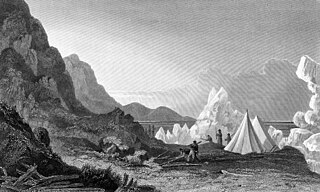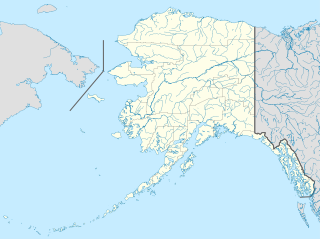 W
WArctic exploration is the physical exploration of the Arctic region of the Earth. It refers to the historical period during which mankind has explored the region north of the Arctic Circle. Historical records suggest that humankind have explored the northern extremes since 325 BC, when the ancient Greek sailor Pytheas reached a frozen sea while attempting to find a source of the metal tin. Dangerous oceans and poor weather conditions often fetter explorers attempting to reach polar regions and journeying through these perils by sight, boat, and foot has proven difficult.
 W
WLeonid Belakhov was a general and a senior Soviet administrator at the time of World War II, and managed several strategic logistical programs that influenced the course of the war, including the transportation of war aid from the US through the Lend-Lease program and of troops and fuel for the beginning of the offensive against the Nazi Germany's invasion of the USSR.
 W
WSir Felix Booth, 1st Baronet, FRS was a wealthy British gin distiller, and promoter of Arctic exploration, with various places in Nunavut, Canada being named after him.
 W
WBradley Land was the name Frederick Cook gave to a mass of land which he claimed to have seen between and during a 1909 expedition. He described it as two masses of land with a break, a strait, or an indentation between. The land was named for John R. Bradley, who had sponsored Cook's expedition.
 W
WThe Chief Directorate of the Northern Sea Route, also known as Glavsevmorput or GUSMP, was a Soviet government organization in charge of the maritime Northern Sea Route, established in January 1932 and dissolved in 1964.
 W
WFarthest North describes the most northerly latitude reached by explorers before the conquest of the North Pole rendered the expression obsolete. The Arctic polar regions are much more accessible than those of the Antarctic, as continental land masses extend to high latitudes and sea voyages to the regions are relatively short.
 W
WFranklin's lost expedition was a British voyage of Arctic exploration led by Captain Sir John Franklin that departed from England in 1845 aboard two ships, HMS Erebus and HMS Terror, and was assigned to traverse the last unnavigated sections of the Northwest Passage in the Canadian Arctic. The expedition met with disaster after both ships and their crews, a total of 129 officers and men, became icebound in Victoria Strait near King William Island, in what is today the Canadian territory of Nunavut. After being icebound for more than a year, Erebus and Terror were abandoned in April 1848, by which point Franklin and nearly two dozen others had died. The survivors, now led by Franklin's deputy Francis Crozier and Erebus' captain James Fitzjames, set out for the Canadian mainland and disappeared.
 W
WHenry Williamson Howgate was an American Army Signal Corps officer and Arctic explorer who embezzled over $133,000 from the U.S. Government. He escaped custody while on trial and evaded the Secret Service and Pinkerton Detective Agency for 13 years, during which time he worked as a reporter and ran a New York bookstore.
 W
WIce navigation is a specialist area of navigation involving the use of maritime skills to determine and monitor the position of ships in cold waters, where ice is a hazard to the safety of navigation. The presence of sea ice requires a ship to exercise caution, for example by avoiding icebergs, slowly sailing through a lead, or by working with an icebreaker to follow a course through the ice to a destination. Additionally ships must also deal with the extreme cold of the climate in regions such as the poles; this involves removal of ice accumulation from the ship, as well as protecting the crew from the elements while working on the deck. Ships and their crews operating in ice will follow established rules of seamanship, as well as complying with national and international regulations such as the Polar Code.
 W
WRasmus Jensen was a Danish Lutheran priest and the first Lutheran cleric in Canada.
 W
WThe Mackenzie River expedition of 1825–1827 was the second of three Arctic expeditions led by explorer John Franklin and organized by the Royal Navy. It had as its goal the exploration of the North American coast between the mouths of the Mackenzie and Coppermine rivers and the Bering Strait, in what is now present-day Alaska, Yukon, the Northwest Territories, and Nunavut. Franklin was accompanied by George Back and John Richardson, both of whom he had previously collaborated with during the disastrous Coppermine expedition of 1819–1821. Unlike Franklin's previous expedition, this one was largely successful, and resulted in the mapping of more than 1,000 kilometres (620 mi) of new coastline between the Kent Peninsula and Prudhoe Bay, Alaska, an area that until then had remained largely unexplored by Europeans.
 W
WJens Munk was a Dano-Norwegian navigator and explorer. He entered into the service of King Christian IV of Denmark and is most noted for his attempts to find the Northwest Passage to India.
 W
WThe Muscovy Company was an English trading company chartered in 1555. It was the first major chartered joint stock company, the precursor of the type of business that would soon flourish in England and finance its exploration of the world. The Muscovy Company had a monopoly on trade between England and Muscovy until 1698 and it survived as a trading company until the Russian Revolution of 1917. Since 1917 the company has operated as a charity, now working within Russia.
 W
WNansen's Fram expedition of 1893–1896 was an attempt by the Norwegian explorer Fridtjof Nansen to reach the geographical North Pole by harnessing the natural east–west current of the Arctic Ocean. In the face of much discouragement from other polar explorers, Nansen took his ship Fram to the New Siberian Islands in the eastern Arctic Ocean, froze her into the pack ice, and waited for the drift to carry her towards the pole. Impatient with the slow speed and erratic character of the drift, after 18 months Nansen and a chosen companion, Hjalmar Johansen, left the ship with a team of dogs and sledges and made for the pole. They did not reach it, but they achieved a record Farthest North latitude of 86°13.6′N before a long retreat over ice and water to reach safety in Franz Josef Land. Meanwhile, Fram continued to drift westward, finally emerging in the North Atlantic Ocean.
 W
WUSS Nautilus (SSN-571) was the world's first operational nuclear-powered submarine and the first submarine to complete a submerged transit of the North Pole on 3 August 1958. Her initial commanding officer was Eugene Parks "Dennis" Wilkinson, a widely respected naval officer who set the stage for many of the protocols of today's Nuclear Navy, and who had a storied career during military service and afterwards.
 W
WThe Norge Storage Site is a historic building in the small native city of Teller, Alaska. It is a two-story wood frame building with a false front, and a small single-story addition to the east. The building's notability lies with its association with the groundbreaking voyage of the dirigible Norge, which overflew the North Pole on May 11, 1926. Commanded by the explorer Roald Amundsen and its Italian maker, Umberto Nobile, the airship flew from Spitsbergen, Norway on May 10, and made for Nome after crossing the pole. Frustrated by fog and bad weather, the ship was landed instead at Teller, about 72 miles (116 km) from Nome, landing on Front Avenue near this building. The airship was dismantled and stored here until a freighter could be sent to recover it.
 W
WThe Northwest Passage (NWP) is the sea route between the Atlantic and Pacific oceans through the Arctic Ocean, along the northern coast of North America via waterways through the Canadian Arctic Archipelago. The eastern route along the Arctic coasts of Norway and Siberia is accordingly called the Northeast Passage (NEP).
 W
WMount Rigny, Danish: Rigny Bjerg, Rignys Bjerg) is a mountain peak in East Greenland. It is located in King Christian IX Land, Sermersooq Municipality.
 W
WUSS Sargo (SSN-583), a Skate-class nuclear-powered submarine, was the second ship of the United States Navy to be named for the sargo, a food and game fish of the porgy family, inhabiting coastal waters of the southern United States.
 W
WUSS Skate (SSN-578), the third submarine of the United States Navy named for the skate, a type of ray, was the lead ship of the Skate class of nuclear submarines. She was the third nuclear submarine commissioned, the first to make a completely submerged trans-Atlantic crossing, and the second submarine to reach the North Pole and the first to surface there.
 W
WThe Three-year Expedition was an exploratory expedition to East Greenland that lasted from 1931 to 1934 financed by the Carlsberg Foundation and the Danish state. The expedition included aerial surveys.
 W
WUshakov Island is an isolated island located in the Arctic Ocean, Russian Federation.
 W
WUyedineniya Island is an island located in the central part of the Kara Sea, roughly midway between Novaya Zemlya and Severnaya Zemlya. Its latitude is 77° 29' N and its longitude 82° 30' E. It is often labelled as Einsamkeit Island as well as Lonely Island or Solitude Island in English maps.
 W
WUSS Whale (SSN-638) was a Sturgeon-class submarine nuclear-powered attack submarine of the United States Navy. She was the second ship of that name, after the whale family of aquatic mammals.